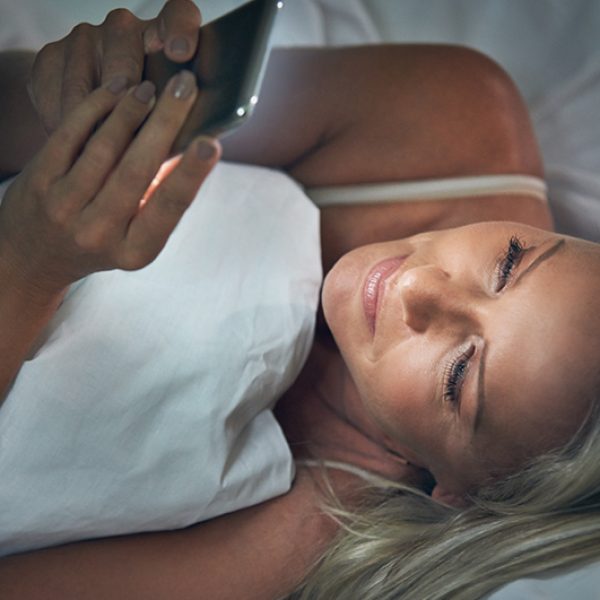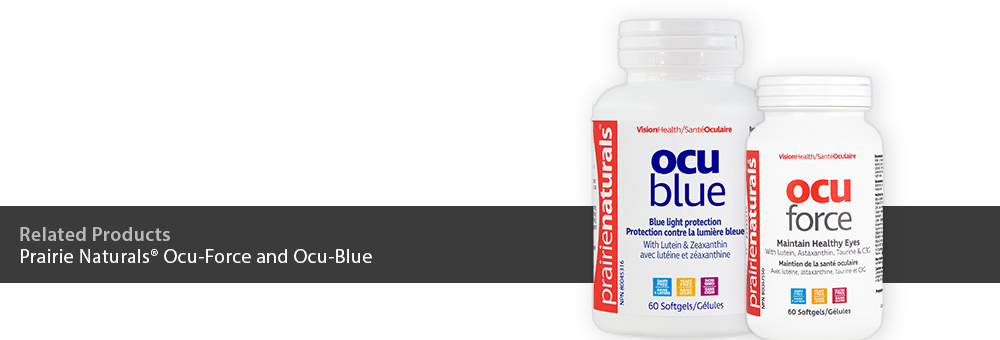

Vision protection for the digital age
Can you guess what has recently popped up as one of today’s most concerning health hazards? We are all exposed to it every day. It’s not a contagious virus or bacteria but it’s more frequent than the common cold. It’s called “blue light” and scientists are warning us that it poses very serious risks to our eyesight.
Blue light is that ubiquitous aura that constantly emanates from the screens of our various electronic devices. We are bombarded with it. Our cell phones, tablets, TVs, laptops and interior LED lights emit this perpetual glow that we now know, with absolute certainty, wreaks havoc on our eyes and vision.
Even more prevalent than sunlight exposure, blue light has emerged as the foremost threat to our vision by penetrating and damaging the retina and other parts of our eye. Our cumulative daily exposure to blue light is often far greater than we realize. Blue light exposure significantly increases our risk of developing age-related macular degeneration, the leading cause of blindness in older adults.
Blue light is emitted from the sun, and it is very important for human health. This wavelength of light has been shown to be very influential in regulating our bodies circadian rhythm. Circadian rhythm disruption impairs blood sugar control, and impairs the secretion of leptin, a hormone that tells us when we are full. When your circadian rhythm is disrupted it can lead to the development of other diseases. Blue light exposure outside of normal daylight hours disrupts your circadian rhythm. Fluorescent and LED lights, screens – including televisions, computers, smartphones, and tablets, all produce blue light. It is these devices, that when used for long periods and used outside of normal daylight hours, causes health problems.
People are using blue light emitting devices more than ever. Being exposed to blue light after daylight hours has been associated with increased fatigue. Over time, blue light damages the retina and can lead to macular degeneration, the leading cause of vision loss in Canada. Our reliance on technology for communication has created this new threat. Research by Common Sense Media, found the average teenager in the US, spends 9 hours per day engaged with media. Many adults spend their days tied to computer screens and many work well into the evening or spend their off time staring at an LED television. All of this blue light exposure can be detrimental.
There are ways to combat this blue light. Obviously limiting your screen time is your best option, but if that is not an option take measures to reduce exposure to the blue spectrum. There are applications that you can get for your electronic devices that can reduce the amount of blue light that is emitted. Many of these programs will actually mimic the local sun, slowly dimming the amount of blue in the evening, and slowly increasing it in the morning.
There are home options available as well that can help with your overall blue light exposure. There are special low blue light emitting light bulbs available. These bulbs replace standard LED bulbs and emit a reduced spectrum and intensity of blue light. There are also special screen filters that you can get for computers, televisions and other screens in your house. If you suffer from sleep problems or have a strong family history of degenerative eye conditions, it may be a good idea to consider your overall lighting environment.
Our bodies also have some natural blue light blocking systems. There are special pigments found in our eyes that can filter blue light. A few of these pigments, lutein and zeaxanthin, do a remarkable job of protecting our macula. Lutein and zeaxanthin are carotenoid pigments found in our diet, especially in leafy greens such as kale, spinach and collard greens. It is concentrated in the macula, a pigment rich area of our eyes. These carotenoids neutralize blue light and protect our macula. The higher our blue light exposure, the higher our requirements become. A newer addition to the battle against blue light is another carotenoid compound called astaxanthin. Astaxanthin is found in relatively low amounts in our diet. Astaxanthin is a remarkable compound that is 4 times stronger an antioxidant than lutein.
The Canadian Association of Optometrists makes recommendations around blue light, such as keeping children under 2 away from screens altogether, and limiting children age 5 to 18 to under 2 hours per day.
Blue light is quickly becoming recognized as a leading threat to our health. It is dangerous because it creates problems gradually and we are exposed to levels we have never seen before in human history. New threats require new approaches and supplementing our diets to ensure adequate protection is a good idea. Making changes to your environment at home is also very important, adding screen filters and choosing low blue light bulbs to protect yourself and your family.
By: Dr Jonathan Beatty ND, Education and Formulation with Prairie Naturals
